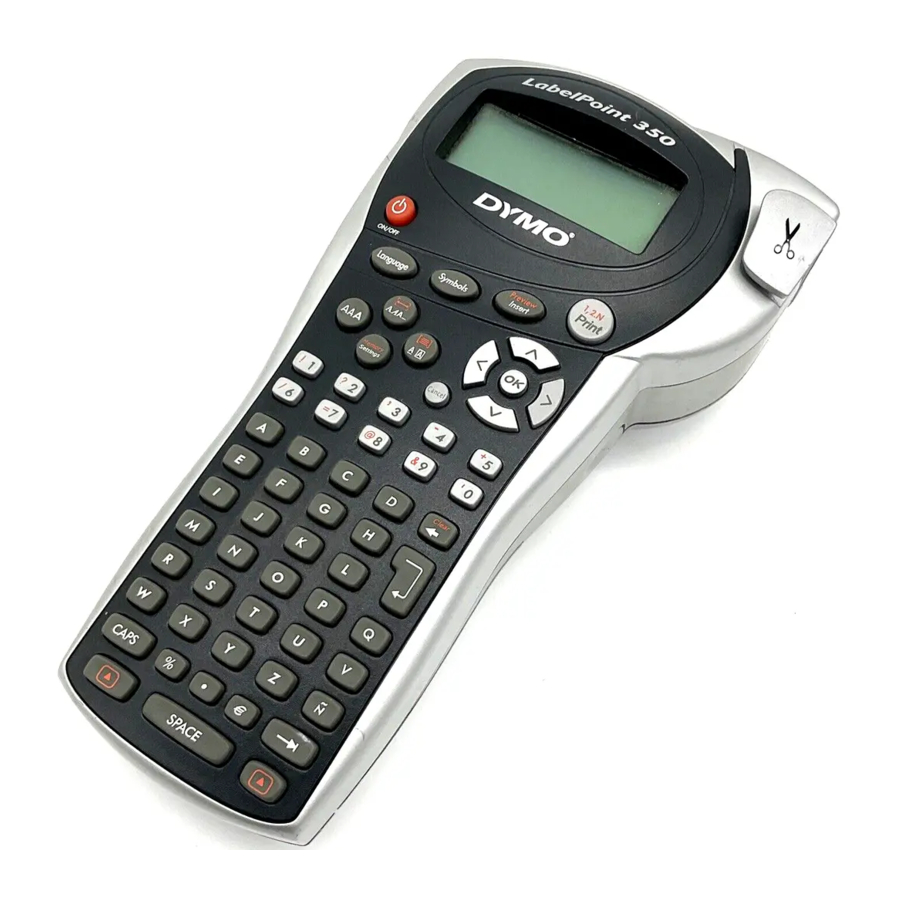
Dymo LabelPoint 350 - Electronic Thermal Labelmaker Manual
- User manual (42 pages) ,
- Quick start (4 pages) ,
- User manual (17 pages)
Advertisement
- 1 Device Overview
- 2 About Your New Labelmaker
- 3 Getting Started
- 4 Getting to Know the Labelmaker
- 5 Connecting to Your Computer
- 6 Formatting Your Label
- 7 Using Symbols and Special Characters
- 8 Printing Options
- 9 Using Labelmaker Memory
- 10 Caring for Your Labelmaker
- 11 Troubleshooting
- 12 Documentation Feedback
- 13 Documents / Resources

Device Overview
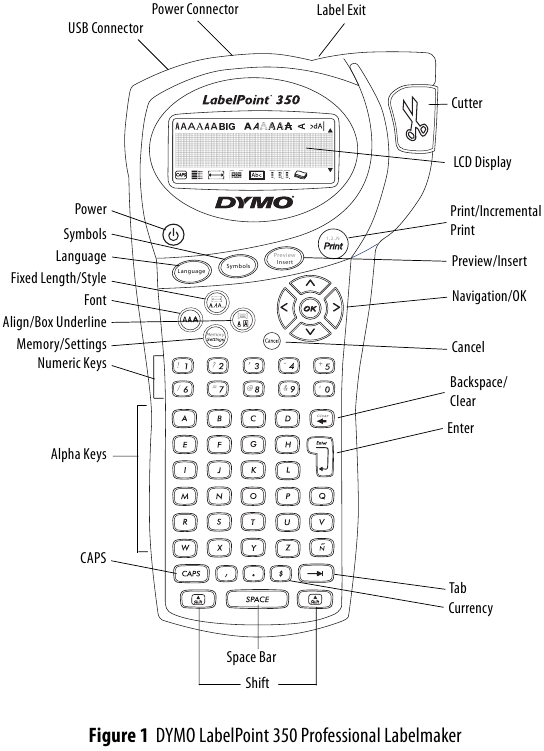
About Your New Labelmaker
With your new DYMO LabelPoint™ 350 labelmaker, you can create a wide variety of high-quality, self-adhesive labels. You can choose to print your labels in many different sizes and styles. The labelmaker uses DYMO D1 label cassettes in widths of 6 mm (1/4"), 9 mm (3/8"), 12 mm (1/2"), or 19 mm (3/4"). Label cassettes are also available in a wide range of colors.
Visit www.dymo.com for information on obtaining labels and accessories for your labelmaker.
Warranty Registration
Please complete the warranty registration card and return it to the appropriate Customer Support address within seven days. Visit www.dymo.com for details.
Getting Started
Follow these instructions to print your first label.
Connecting the Power
The labelmaker is powered by standard batteries, an optional, rechargeable battery pack, or an AC power adapter. To save power, the labelmaker will automatically turn off after two minutes of inactivity.
Inserting the Batteries
The labelmaker uses six AA alkaline batteries.
To insert the batteries
- Remove the battery compartment cover. See Figure 1.
![]()
- Insert the batteries following the polarity markings (+ and –).
- Replace the battery compartment cover.

Using the Battery Pack
An optional, rechargeable battery pack can be used to power the labelmaker. The battery pack can be purchased through your local DYMO reseller.
The labelmaker must be connected to external power through the AC adapter to charge the battery pack. When the battery pack is completely discharged, allow four to five hours to fully charge the battery.

To use the battery pack
- Open the battery compartment door.
- Insert the battery pack. See Figure 2.
![]()
- To charge the battery pack, connect the AC adapter as described in the next section.
Connecting the Power Adapter
An optional AC power adapter can also be used to power the labelmaker. Connecting the AC adapter to the labelmaker disconnects the batteries as a power source.
To connect the power adapter
- Plug the power adapter into the power connector on the top, left side of the labelmaker.
- Plug the other end of the power adapter into a power outlet.

Inserting the Label Cassette
Your labelmaker comes with one label cassette. Visit www.dymo.com for information about purchasing additional label cassettes.
To insert the label cassette
- Press and release the label cassette cover to open the label compartment. See Figure 3.
![]()
The first time you use the labelmaker, remove the protective cardboard insert from between the print head and pinch roller. See Figure 4.
![Dymo - LabelPoint 350 - Set the cassette switch Set the cassette switch]()
- Set the cassette switch for the size of the label cassette that you are inserting. See Figure 4.
A notch in the cassette fits over the switch when the cassette is in the correct position. - Make sure the label and ribbon are taut across the mouth of the cassette and that the label passes between the guideposts. If necessary, turn the spool clockwise to tighten the ribbon.
- Insert the cassette with the label and ribbon positioned between the print head and pinch roller. See Figure 5.
![]()
- Press firmly until cassette clicks into place.
- Close the label cassette cover and press
![]() to turn on the power.
to turn on the power.
Settings
You can select the language and corresponding units of measure you want the labelmaker to use.
Selecting a Language
You can select from a number of different language options. By default, the language is set to English.
To select a language
- Press
![]() .
. - Use the arrow keys to select the language you want and press
![]() .
.
Selecting Units of Measure
You can choose to show measurements in inches or millimeters. By default, the units of measure are set to inches.
To set the units of measure
- Press
![]() .
. - Use the arrow keys to select Set Units and press
![]() .
. - Select inches or millimeters and press
![]() .
.
Printing Your First Label
You are now ready to print your first label.
To print a label
- Enter text to create a simple label.
- Press
![]() .
. - Use the cutter lever to cut the label.
Congratulations! You have printed your first label. Continue reading to learn more about the options available for creating labels.
Getting to Know the Labelmaker
The following sections describe each feature in detail. Become familiar with the location of the feature and function keys on your labelmaker. See Figure 1 on the inside front cover.
Power
The  button turns the power on and off. After two minutes of no activity, the power is switched off automatically. The last label created is remembered and displayed when the power is turned back on. The previously selected style settings are also restored.
button turns the power on and off. After two minutes of no activity, the power is switched off automatically. The last label created is remembered and displayed when the power is turned back on. The previously selected style settings are also restored.
LCD Display
The labelmaker's LCD display shows a row of 16 characters. However, you can enter up to 99 characters and spaces.
The display is similar to a window that scrolls across the text. (See Figure 6.) The number of characters actually displayed can vary due to proportional spacing.

In addition, feature indicators appear on the display to let you know when a feature is selected. See Figure 7.
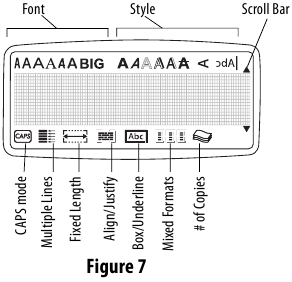
CAPS Mode
The  key toggles capitalization on and off. When CAPS mode is turned on, the CAPS mode indicator is shown on the display and all letters that you enter will be capitalized. The default setting is CAPS mode on. When CAPS mode is off, all letters entered appear in lower case.
key toggles capitalization on and off. When CAPS mode is turned on, the CAPS mode indicator is shown on the display and all letters that you enter will be capitalized. The default setting is CAPS mode on. When CAPS mode is off, all letters entered appear in lower case.
Shift Key
The  key, when used in combination with an alphabet key, changes the case of the selected letter. When used in combination with number keys or function keys, the
key, when used in combination with an alphabet key, changes the case of the selected letter. When used in combination with number keys or function keys, the  key selects the alternate function shown on the key. For example, when you press
key selects the alternate function shown on the key. For example, when you press ![]() , the character to the left of the cursor is deleted; however, when you press
, the character to the left of the cursor is deleted; however, when you press  +
+ ![]() together, the entire label text and formatting is deleted and the display is ready for you to type a new label.
together, the entire label text and formatting is deleted and the display is ready for you to type a new label.
Space Bar
The  key inserts one or more blank spaces in your text.
key inserts one or more blank spaces in your text.
Backspace
The ![]() key removes the character to the left of the cursor. Pressing
key removes the character to the left of the cursor. Pressing  +
+ ![]() clears all label text and formatting.
clears all label text and formatting.
Cancel
The ![]() key allows you to exit from a menu without making a selection or to cancel an action.
key allows you to exit from a menu without making a selection or to cancel an action.
Navigation Keys
You can review and edit your label using the left and right arrows on the Navigation key. You can navigate through menu selections using the up and down arrow keys, and then press  to make a selection.
to make a selection.
Connecting to Your Computer
Your labelmaker can be used as a standalone label printer or you can print labels from your computer using DYMO Label Software. Your labelmaker connects to your computer using the USB connection located on the top of the labelmaker. See Figure 8.
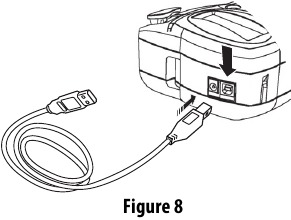
Refer to the LabelPoint 350 Quick Start Card for installation instructions and the DYMO Label Software User Guide for information about designing and printing labels.
Formatting Your Label
You can choose from a number of formatting options to enhance the appearance of your labels.

Changing the Font Size
Seven font sizes are available for your labels:
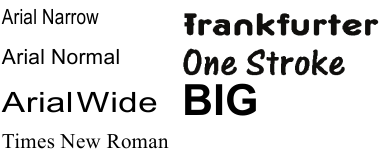
When you select a font, that font applies to all characters on a label. If you want to use more than one font, you must insert format breaks. See Using Mixed Formats for more information.
To set the font
- Press the
![]() key.
key. - Move to the desired font and then press
![]() .
.
Using Mixed Formats
You can apply different fonts and format styles to the text on a label by inserting format breaks to divide the label into blocks or sections of text. You can add two format breaks allowing you to apply three separate formats per label.

To add a format break
- Enter and format text for the first section.
- Press
![]() .
. - Select Insert Format Break and press
![]() . A new section character
. A new section character ![]() is displayed at the end of the first section, but will not print on the label.
is displayed at the end of the first section, but will not print on the label. - Continue entering and formatting text for the next section of the label.
Adding Font Styles
You can choose from thirteen different font styles to apply to your text. See Figure 9.
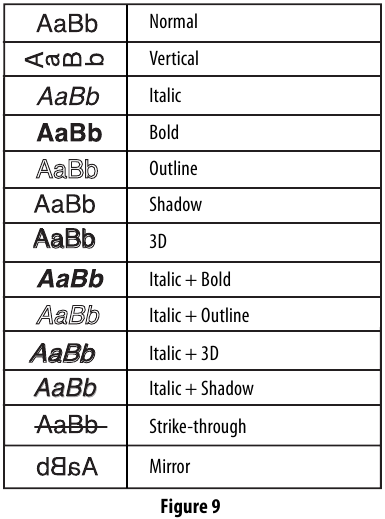
When you select a style, that style applies to all characters on a label. If you want to use more than one style, you must insert format breaks. See Using Mixed Formats for more information. However, when you use mirror or vertical style, that style applies to the whole label.
Styles can be used with all alphanumeric characters and symbols. See Using Symbols and Special Characters for more information on printing symbols.
To set the font style
- Press the
![]() key.
key. - Use the arrow keys to move to the desired style and then press
![]() .
.
Adding Box and Background Styles
You can further highlight your text by choosing a box, underline, or background style.
A label can be underlined or enclosed in a box or background, but not both together.

To set the box style
- Press the
![]() key.
key. - Select a frame style and then press
![]() .
.
On multi-line labels, all lines are underlined. In box style mode, all the lines are enclosed in one box style.
Creating Multiple-Line Labels
The number of lines you can print on a label depends on the size label you are using:
- Maximum of five lines on 19 mm (3/4") labels
- Maximum of three lines on 9 mm (3/8") and 12 mm (1/2") labels
- Maximum of one line on 6 mm (1/4") labels
To create a multiple-line label
- Type the text for the first line, and press
![]() . A new line character
. A new line character ![]() is displayed at the end of the first line, but will not print on the label.
is displayed at the end of the first line, but will not print on the label. - Type the text for the second line.
The display shows the line on which you are currently entering text. The example below indicates that the second line is the current line on the label.
![]()
Use the arrow keys to move between lines.
Using Tabs
You can add tabs to a label to align text on multi-line labels. Tabs are left justified and the default spacing is 50 mm (2.0").
To change the tab spacing
- Press
![]() .
. - Select Set Tab Length and press
![]() .
. - Use the up and down arrow keys to increase or decrease the tab setting, and then press
![]() .
.
To insert a tab
- Enter your text.
- Press the
![]() key and continue entering text.
key and continue entering text.
Using Symbols and Special Characters
Symbols and other special characters can be added to your labels.
Adding Symbols
The labelmaker supports the extended symbol set as shown in Figure 11.

To add a symbol
- Press
![]() . The first row of symbols shown in the table appears in the display.
. The first row of symbols shown in the table appears in the display. - Use the arrow keys to move to the desired symbol. The left and right arrows move horizontally along a row of symbols. The up and down arrow keys scroll vertically through the rows of symbols.
To quickly see a row of symbols, you can press the letter corresponding to the row you want. - When you locate the desired symbol, press
![]() to add the symbol to your label text.
to add the symbol to your label text.
Adding International Characters
The labelmaker supports the extended Latin character set using RACE technology. Similar to using a mobile phone keypad, if you type a letter multiple times within a very short time, you will scroll through variations on that letter.
For example, if French is selected as the language and you repeatedly press the letter a, you will see a à â æ and so on through all the variations available. The character variations and the order in which the variations appear depend on the language you have selected to use.
Currency Symbols
The currency key ![]() also uses RACE to scroll through a number of currency symbols:
also uses RACE to scroll through a number of currency symbols:
$ £ € ¢ ¥
The order these symbols appear depends on the language you have selected.
Printing Options
You can print multiple copies of a label at one time, print serialized labels, print fixed-length labels, review label text and format, and adjust the printing contrast.
Printing Multiple Copies
You can print up to 16 copies of a label at one time. When printing multiple copies, a dotted cut-line is printed between each label.
To print multiple copies of the label
- Press
![]() and then select Set # Copies.
and then select Set # Copies. - Press the up arrow key to increase the number of copies to print.
- Press the down arrow key to begin decreasing the number of copies from 16.
- Press
![]() .
. - Press G to begin printing.
When printing is finished, the number of copies to print returns to the default value of 1.
Serializing Your Labels
You can print a series of labels with the last number incremented by one number. The number of labels serialized depends upon the number of copies you selected to print. Only the last series of numbers that follows any letter, space, or punctuation will be serialized. For example, abc123 will print as abc123, abc124, abc125; and 123-998 will print as 123-998, 123-999, 123-1000, and so on.
To serialize your labels
- Enter the text for your label.
- Select the number of labels to print as described in Printing Multiple Copies.
- Select
![]() + G.
+ G.
Printing a Fixed-Length Label
Normally, the length of the label is determined by the length of the text entered. However, you may wish to make a label for a specific purpose that is a fixed length regardless of the length of the text.
You can specify a fixed length for a label in 2 mm (0.1") increments between 40 mm (1.5") and 400 mm (15.0"). The preset fixed length is 100 mm (4.0"). Any change you make to the fixed-length setting remains in effect until you change it.
To set the label length
- Press
![]() +
+ ![]() .
. - Select ON to turn on Fixed Length.
- Press the up arrow to increase the length.
- Press the down arrow to decrease the length.
- Press
![]() to set the fixed length.
to set the fixed length. - After you print the label, repeat step 1 and turn Fixed Length OFF; otherwise, all your subsequent labels will print with this fixed length.
Printing Barcode Labels
The labelmaker can print barcodes in six standard formats: UPC A, UPC E, EAN8, EAN13, CODE-39, and CODE-128. You can only print a barcode on 19 mm (3/ 4") labels; and you can only print one barcode per label.
The barcode prints horizontally along the label with the text in small print underneath the barcode. You can optionally add text before and after the barcode. Or, you can add text above or below the barcode by creating a two-line label. See Creating Multi-Line Labels.
Four of the standard barcodes require a fixed number of characters to generate the barcode: EAN-8, EAN-13, UPC-A, and UPC-E. CODE-39 and CODE-128 barcodes allow a variable number of characters to be entered.
To create a barcode
- Press
![]() .
. - Select Set Barcode and press
![]() .
. - Use the arrow keys to select the barcode type, and press
![]() .
.
One or more question marks appear between the barcode symbols (![]() ).
).
![]()
You may see a 0 in the far right position for some barcode types. This is a check digit and will be replaced with a number when the barcode data is entered. - Enter the data for the barcode, replacing the question marks, and press
![]() when finished.
when finished. - Enter the text you wish to appear before the barcode on the label. (Optional)
- Press
![]() .
. - Use the arrow keys to select Insert Barcode, and press
![]() .
. - Enter any text you wish to appear after the barcode. (Optional)
- Press G.
Previewing Your Label
You can preview the text or format of your label prior to printing. A two-line label is previewed as a single line label.
To preview your label
- Press
![]() +
+ ![]() .
. - Select Text or Format.
If you select Text, the text of the label scrolls across the display. If you select Format, the format selected displays briefly.
Aligning the Text
When you print a fixed length label you can choose to align the text at the left, center, or right side of the label. For multi-line labels, all lines of text are aligned left, center, and right relative to each other.
To align the text
- Press
![]() + >.
+ >. - Select the desired alignment using the arrows keys and press
![]() .
. - Press
![]() to turn off the alignment setting.
to turn off the alignment setting.
Adjusting the Print Contrast
You can adjust the print contrast to fine tune the print quality of your label.
To set the contrast
- Press
![]() .
. - Select Print Contrast and press
![]() .
. - Select a contrast setting and press
![]() .
.
Using Labelmaker Memory
The labelmaker has a powerful memory feature that stores text and formatting as follows:
- Automatically stores the last fifteen labels printed.
- Allows you to store the text of up to ten labels you use frequently.
- Allows you to name and store up to ten commonly used label formats.
Storing Label Text
The labelmaker automatically keeps the last fifteen labels printed in a text buffer. In addition, you can store up to ten specific labels you use frequently.
To store the current label text
- Press
![]() +
+ ![]() .
. - Select Save and then Label.
The first of ten memory fields is displayed. - Use the arrow keys to move through the fields. You can store new text in any of the memory locations, however, if you select a location that is filled, the previous label text will be overwritten.
- Select a memory location and press
![]() .
.
Your label text is saved and you are returned to the label.
Storing Formats
In addition to label text, you can store up to ten specific label formats you use frequently. This feature stores only the formatting information not the label text.
To store the current format
- Press
![]() +
+ ![]() .
. - Select Save and then Format.
The first of ten memory fields is displayed. - Use the arrow keys to move through the fields. You can store a new format in any of the memory locations, however, if you select a location that is filled, the previously stored format will be overwritten.
- Select a field and press
![]() . The word Name? appears in the field.
. The word Name? appears in the field. - Enter a name for the format and press
![]() . The label format is saved and you are returned to the label.
. The label format is saved and you are returned to the label.
Recalling Stored Labels and Formats
You can easily recall labels and formats stored in memory to use at a later time.
To recall labels or formats
- Press
![]() +
+ ![]() .
. - Select Recall and then Label, Format, or Last Printed.The first memory location is displayed similar to storing a label or format.
- Select a label or format to recall and press
![]() .
.
Caring for Your Labelmaker
Your labelmaker is designed to give you long and trouble-free service, while requiring very little maintenance.
Clean your labelmaker from time to time to keep it working properly. Clean the cutter blade each time you replace the label cassette.
To clean the cutter blade
- Remove the label cassette.
- Press and hold down the cutter lever to expose the cutter blade.
- Use a cotton ball and alcohol to clean both sides of the blade.
- Release the cutter lever.

To clean the print head
- Clean the print head using the cleaning tool located inside the label compartment lid.
Troubleshooting
Review the following possible solutions if you encounter a problem while using your labelmaker.
| Problem/Error Message | Solution |
| No display |
|
| Poor Print Quality |
|
| Poor Cutter Performance | Clean the cutter blade. See Caring for Your Labelmaker. |
| Printing | No action required. Message disappears when printing is finished. |
| Too many characters Exceeded maximum number of characters in buffer. | Delete some or all of the buffer text. |
| Too many lines Exceeded maximum number of lines allowed. | Select another format. |
| Insert Label Cassette Label cassette missing or empty. | Insert a new label cassette |
| Battery low Batteries almost discharged. | Replace batteries or connect AC power adapter. |
| Label Jam Motor is stalled due to label jam. |
|
| Too many pages Exceeded maximum number of format breaks allowed. | Change label layout. |
| Page not empty | Delete all content on the page. |
| Label size too small | Change label size or press Cancel to exit Box/Background menu. |
Set  Fixed-length label selected and the length necessary to print the label exceeds the selected length. | Following this message, a fixed-length value is displayed which indicates the minimum label length necessary to fit the text. Do one of the following:
|
If you still need assistance, contact DYMO Customer Support. Refer to Contacting Customer Support at the back of this User Guide to locate the contact number for your country.
Documentation Feedback
We are constantly working to produce the highest quality documentation for our products. We welcome your feedback.
Send us your comments or suggestions about our user guides. Please include the following information with your feedback:
- Product name, model number, and User Guide page number
- Brief description of instructions that are inaccurate or unclear, areas where more detail is needed, and so on
We also welcome your suggestions about additional topics you would like to see covered in the documentation.
Send email messages to: documentation@dymo.com
Please keep in mind that this email address is only for documentation feedback. If you have a technical question, please contact Customer Support.
www.dymo.com

Documents / ResourcesDownload manual
Here you can download full pdf version of manual, it may contain additional safety instructions, warranty information, FCC rules, etc.
Download Dymo LabelPoint 350 - Electronic Thermal Labelmaker Manual
Advertisement
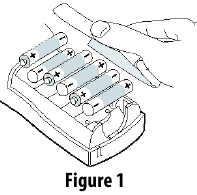
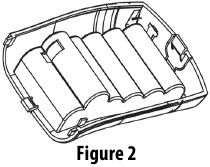
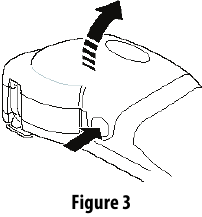
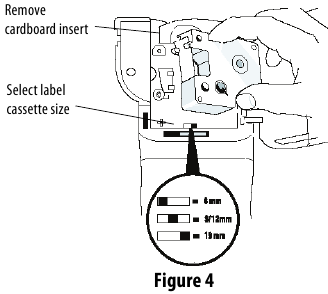
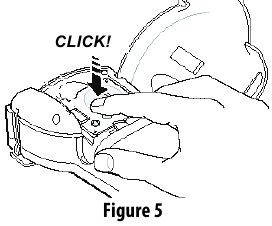
 .
. .
. is displayed at the end of the first line, but will not print on the label.
is displayed at the end of the first line, but will not print on the label. key and continue entering text.
key and continue entering text. . The first row of symbols shown in the table appears in the display.
. The first row of symbols shown in the table appears in the display.
 .
.



















Need help?
Do you have a question about the LabelPoint 350 and is the answer not in the manual?
Questions and answers